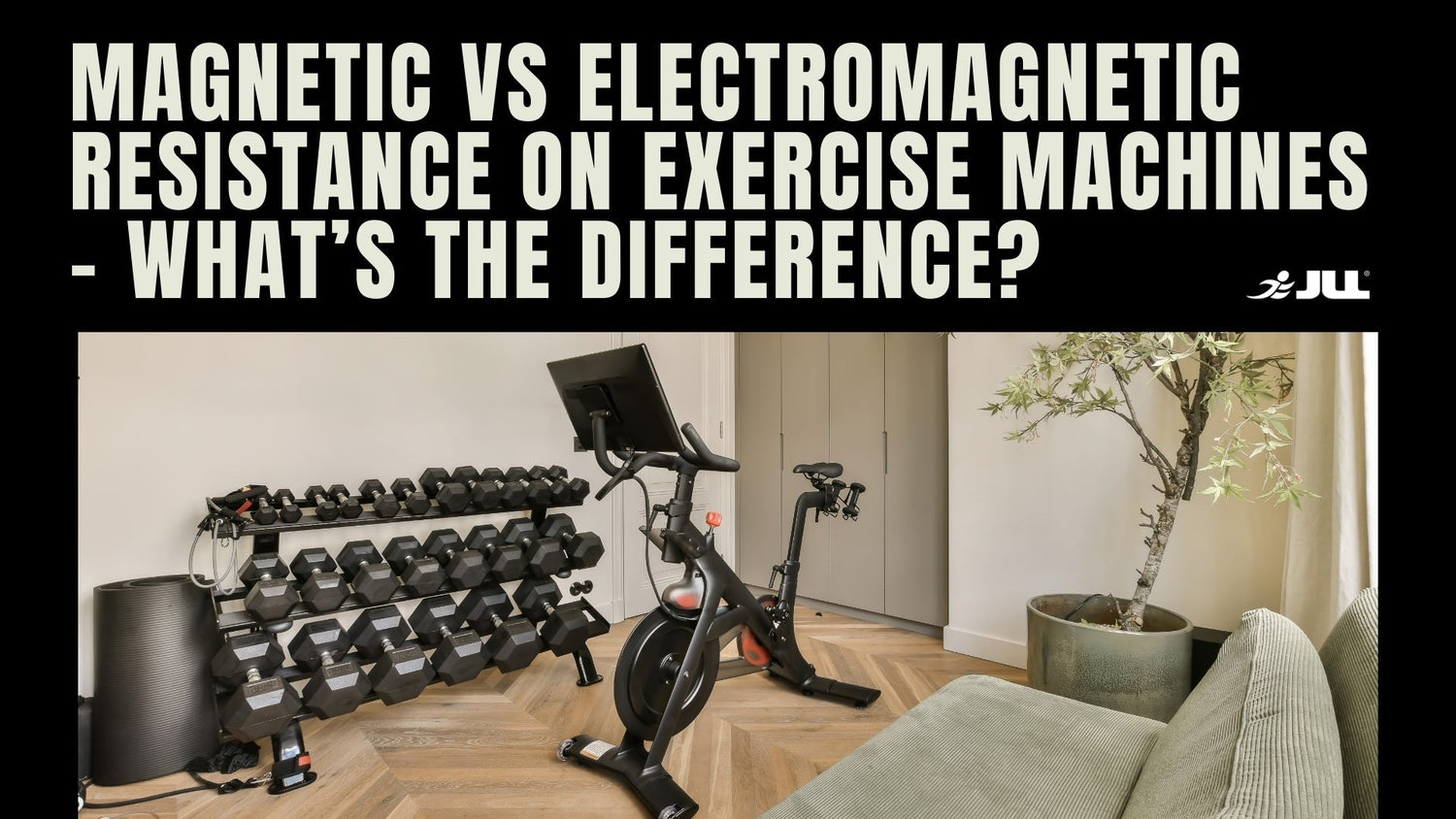When comparing magnetic and electromagnetic (often abbreviated as "electro-magnetic") resistance systems on cardio machines, there are distinct differences in how they operate and their respective benefits. Here’s a breakdown of each:
Magnetic Resistance
1. Operation:
o Mechanism: Magnetic resistance operates using a magnetic brake system that creates resistance through magnets moving closer or further away from a metal flywheel.
o Adjustability: Resistance levels are typically adjusted manually or electronically through a control panel, altering the proximity of the magnets to the flywheel.
2. Benefits:
o Smooth and Quiet Operation: Magnetic resistance systems provide smooth and quiet operation, making them ideal for home use or shared spaces.
o Low Maintenance: They have fewer moving parts compared to other resistance types, reducing the need for maintenance and ensuring durability.
o Consistent Resistance: Once set, magnetic resistance levels remain consistent throughout the workout, providing predictable resistance for precise training.
3. Drawbacks:
o Limited Intensity Range: Some magnetic resistance systems may have a limited range of resistance levels compared to other types like electromagnetic systems.
o Power Dependency: Magnetic resistance requires an external power source to adjust resistance levels electronically.

Electromagnetic (Electro-Magnetic) Resistance
1. Operation:
o Mechanism: Electromagnetic resistance uses an electromagnet and a metal flywheel. The resistance level is controlled by varying the electrical current to the magnet.
o Adjustability: Resistance can be adjusted electronically through a console or programming, allowing for precise and instant changes in resistance levels.
2. Benefits:
o Highly Adjustable: Offers a wide range of resistance levels that can be adjusted instantly and precisely, catering to various workout intensities and user preferences.
o Dynamic Workouts: Enables interval training and program customization with seamless transitions between resistance levels.
o Energy Efficiency: Consumes minimal energy when not in use and generates resistance based on the electrical current, providing efficient operation.
3. Drawbacks:
o Complexity and Cost: Electromagnetic resistance systems tend to be more complex and costly compared to magnetic systems due to their electronic components and advanced features.
o Potential Noise: While generally quieter than air resistance systems, electromagnetic systems may produce some noise due to the electromagnet and moving parts.

Considerations
• User Experience: The choice between magnetic and electromagnetic resistance depends on personal preferences, fitness goals, and budget considerations.
• Fitness Goals: Electromagnetic resistance is often favoured by serious athletes or those seeking precise resistance control and program variability.
• Maintenance: Both systems generally require minimal maintenance, with magnetic systems requiring less due to their simpler design.
In summary, magnetic resistance offers smooth, quiet operation with straightforward adjustability, while electromagnetic resistance provides precise and dynamic resistance control suitable for advanced workouts and programming customization. Choosing between them depends on your specific fitness needs, budget, and desired workout experience.










Leave a comment
All comments are moderated before being published.
This site is protected by hCaptcha and the hCaptcha Privacy Policy and Terms of Service apply.